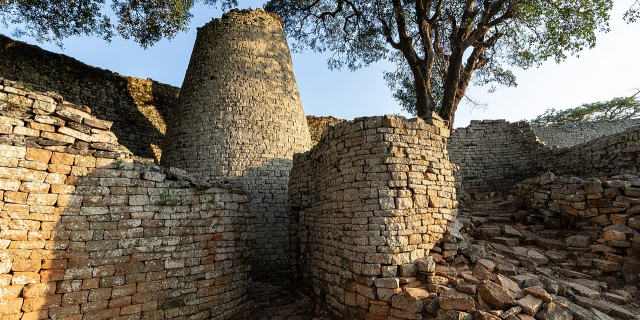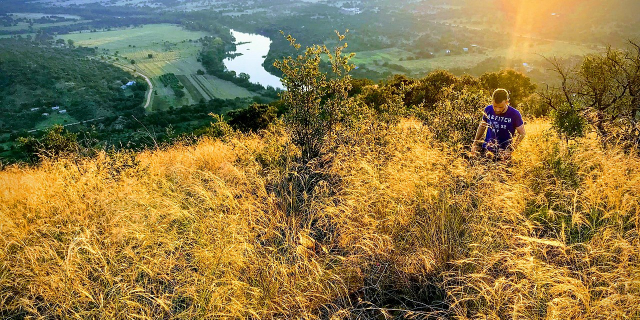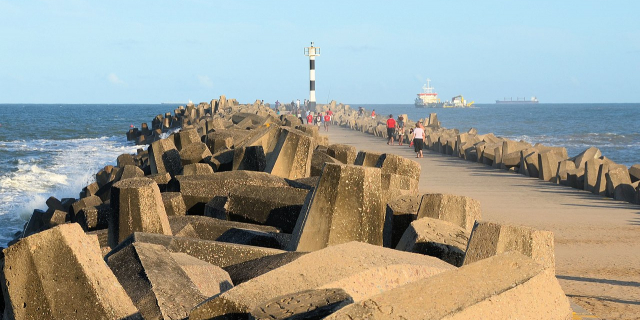Kruger National Park (Tsonga: [ˈkrúːɡà]; Afrikaans: [ˈkry.(j)ər]) is a South African National Park and one of the largest game reserves in Africa. It covers an area of 19,623 km2 (7,576 sq mi) in the provinces of Limpopo and Mpumalanga in northeastern South Africa, and extends 360 km (220 mi) from north to south and 65 km (40 mi) from east to west. The administrative headquarters are in Skukuza. Areas of the park were first protected by the government of the South African Republic in 1898, and it became South Africa's first national park in 1926.
To the west and south of the Kruger National Park are the two South African provinces of Limpopo and Mpumalanga, respectively. To the north is Zimbabwe and to the east is Mozambique. It is now part of the Grea...Read more
Kruger National Park (Tsonga: [ˈkrúːɡà]; Afrikaans: [ˈkry.(j)ər]) is a South African National Park and one of the largest game reserves in Africa. It covers an area of 19,623 km2 (7,576 sq mi) in the provinces of Limpopo and Mpumalanga in northeastern South Africa, and extends 360 km (220 mi) from north to south and 65 km (40 mi) from east to west. The administrative headquarters are in Skukuza. Areas of the park were first protected by the government of the South African Republic in 1898, and it became South Africa's first national park in 1926.
To the west and south of the Kruger National Park are the two South African provinces of Limpopo and Mpumalanga, respectively. To the north is Zimbabwe and to the east is Mozambique. It is now part of the Great Limpopo Transfrontier Park, a peace park that links Kruger National Park with the Gonarezhou National Park in Zimbabwe, and with the Limpopo National Park in Mozambique.
The park is part of the Kruger to Canyons Biosphere, an area designated by the United Nations Educational, Scientific and Cultural Organization (UNESCO) as an International Man and Biosphere Reserve.
The park has nine main gates allowing entrance to the different camps.
Sabi Game Reserve was initially created to control hunting and to protect the diminishing number of animals in the area.[1] The reserve was located in the southern one-third of the modern park.[2]James Stevenson-Hamilton became the first warden of the reserve in 1902.[1] Singwitsi Reserve, named after the Shingwedzi River and now in northern Kruger National Park, was proclaimed in 1903.[3] During the following decades all the native tribes were removed from the reserve and during the 1960s the last were removed at Makuleke in the Pafuri triangle. In 1926, Sabi Game Reserve, the adjacent Shingwedzi Game Reserve, and farms were combined to create Kruger National Park.[1]
During 1923, the first large groups of tourists started visiting the Sabi Game Reserve, but only as part of the South African Railways' popular "Round in Nine" tours. The tourist trains travelled the Selati railway line between Komatipoort on the Mozambican border and Tzaneen in the then northern Transvaal.[4]
Kruger National Park Plaque in the park. Now and then people do get killed; however, this is extremely rare.
Plaque in the park. Now and then people do get killed; however, this is extremely rare.Kruger National Park was proclaimed in 1918.[5] Warden James Stevenson-Hamilton retired on 30 April 1946, after 44 years as warden of the Kruger Park. He was replaced by Colonel J. A. B. Sandenbergh of the South African Air Force.[4] In 1959, work commenced to completely fence the park's boundaries. Work started on the southern boundary along the Crocodile River and in 1960 the western and northern boundaries were fenced, followed by the eastern boundary with Mozambique. The purpose of the fence was to curb the spread of diseases, facilitate border patrolling and inhibit the movement of poachers.[4]
The Makuleke area in the northern part of the park was forcibly taken from the Makuleke people by the government in 1969 and about 1500 of them were relocated to land to the south so that their original tribal areas could be integrated into the greater Kruger National Park.[6]
 Pride of lions on a tourist road
Pride of lions on a tourist roadIn 1996 the Makuleke tribe submitted a land claim for 198.42 km2 (19,842 ha), namely the Pafuri or Makuleke region in the northernmost part of the park.[7] The land was given back to the Makuleke people, however, they chose not to resettle on the land but to engage with the private sector to invest in tourism. This resulted in the building of several game lodges from which they earn royalties.[citation needed]
In the late 1990s, the fences between the Kruger Park and Klaserie Game Reserve, Olifants Game Reserve, and Balule Game Reserve were dropped and incorporated into the Greater Kruger Park with 400,000 ha (4,000 km2) added to the Reserve. In 2002, Kruger National Park, Gonarezhou National Park in Zimbabwe, and Limpopo National Park in Mozambique were incorporated into a peace park, the Great Limpopo Transfrontier Park.[1]































Add new comment